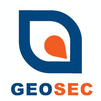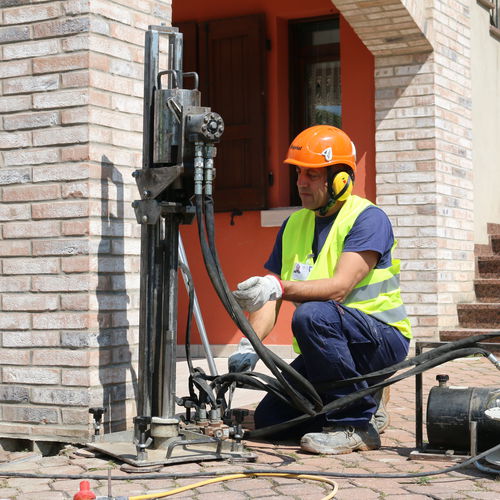
#Industry News
GEOSEC ® in Paris:
one more consolidation intervention in the capital
Parisian soil is known for being unstable for both his compressive nature and for external
reasons due to the human activity. Vibrations due to road traffic and rail circulation, supply networks
leaks, water drainage, and the realization of raised areas are among the most frequent causes of land
subsidence in the “city of light“.
When these phenomena are able of generating impacts on foundations and the overlying
superstructure, it is necessary to act with the most appropriate technique to stop the consequent
disorders to prevent buildings degradation and to guarantee stability.
To solve this problem there are several techniques, but only one allows fast, targeted
intervention without excavations and demolition, while protecting the environment and especially non-
invasive. Unlike micro piles or piles, nowadays is possible to intervene with resin injection into the soil.
Within urban environment such as Paris with adjacent buildings characterized by very limited
access to work areas, intense traffic and pedestrian circulation and the necessity to allow residents
(dwellers and merchants) to continue to occupy and use their properties, traditional interventions,
known for being too invasive, are not necessarily considered.
1. The SEE&SHOOT ® method for the consolidation of the foundation soil
This exclusive process is protected by European Patents: No. EP1914350 and No. EP2543769 for the
consolidation and stabilization of soils subject to subsidence.
The SEE&SHOOT ® method
This innovative solution allows the injections both in surface and in depth on several levels also
overlapped and has many advantages compared to traditional techniques:
- Precise, because thanks to geophysical tomography scans of the terrain allows to identify
those anomalous zones and thus not sufficient to properly support the construction.
- Fast, within a few days the building returns to its security configuration perfectly stable
- Not invasive, because there is no need of excavation and demolition, as for the installation
of micro piles, but only small holes of diameter between 6 and 30 mm for injecting the resin
into the soil under the foundation.
- Environmentally friendly, thanks to the use of special environmentally friendly resins that
after compacting the soil reach an inert and stable state over time without polluting.
- Uniform, in fact the GEOSEC ® intervention helps to consolidate the subsided land in order to
standardize the stability characteristics to those of the most stable areas.
- Protected by a ten-year assurance.
The intervention in detail:
Through the three-dimensional geophysical monitoring (also called electrical resistivity
tomography E.R.T.3D) GEOSEC ® geologist is able to plan targeted injections, for exactly the plot of
volumes that show abnormalities, weakness and which are no longer able to guarantee the stability of
the structure.
The electrical resistivity tomography has the advantage to locate and highlight, through a
three-dimensional image, the following soil characteristics both in the subsided and stable soil:
- Any resistive anomaly, i.e. those due to a concentration of porosity in the soil as a
result of drying or to the presence of cavities and voids which would be the result of
the gully effect among others.
- Any conductive anomaly for example due to water saturation, as a consequence, for
example, of sewage leaks, ineffective drainage and/or changes in groundwater level.
The comparative dynamic penetrometer tests (D.P.M. 30) have the function of determining the
soil mechanical properties. Their position is selected on the basis of tomography indications, they are
more effective and efficient. So they can target precisely during the injections, the layers of the soil
more weakened and less able to support the load of the structure, therefore, have priority in the
consolidation. The ‘’Blanc’’ penetrometer tests, or pre-intervention, are also used to verify the tests
performed as part of previous geotechnical assignments when the consolidation objective is fixed by
the Project ownership/Work Director.
The main added value of GEOSEC ® face-to- face solution compared to other method in the
market lies in a continuous geophysical monitoring for the duration of consolidation intervention.
In fact this allows to verify concretely the soil reaction after injections and it allows also with
absolutely reliable efficacy to validate the results of the intervention, in accordance with the patent
procedure and the best available techniques. In particular, the advantage is twofold:
- Possibility to aim the injections just where you need and as needed
- Possibility of obtaining a consistent result able to homogenize the characteristics of
the subsided soil against the stable ones for the perfect final consolidation.
Intervention phases
• The injections are performed according to the Preliminary geophysical and
topographical report, and with the criteria set out above, the geometry and/or mesh
(horizontal and vertical x, y) with inter-axis and depth of between 0.50 m and 1.50 m.
• The Maxima® resin used in this soil consolidation process is an isotropic polyurethane
resin with closed cells and environmentally friendly. It is specially designed to maintain
its physical and mechanical properties constant during the expansion phase.
• The geoelectrical survey is conducted, for monitoring both the subsided and stable
zones, every three complete cycle of injections, while the penetrometer test is
repeated before, during and at the end of treatment, depending on the entity and the
complexity of the intervention.
• GEOSEC ® team consists of geologists, engineers and at least two workers all trained.




